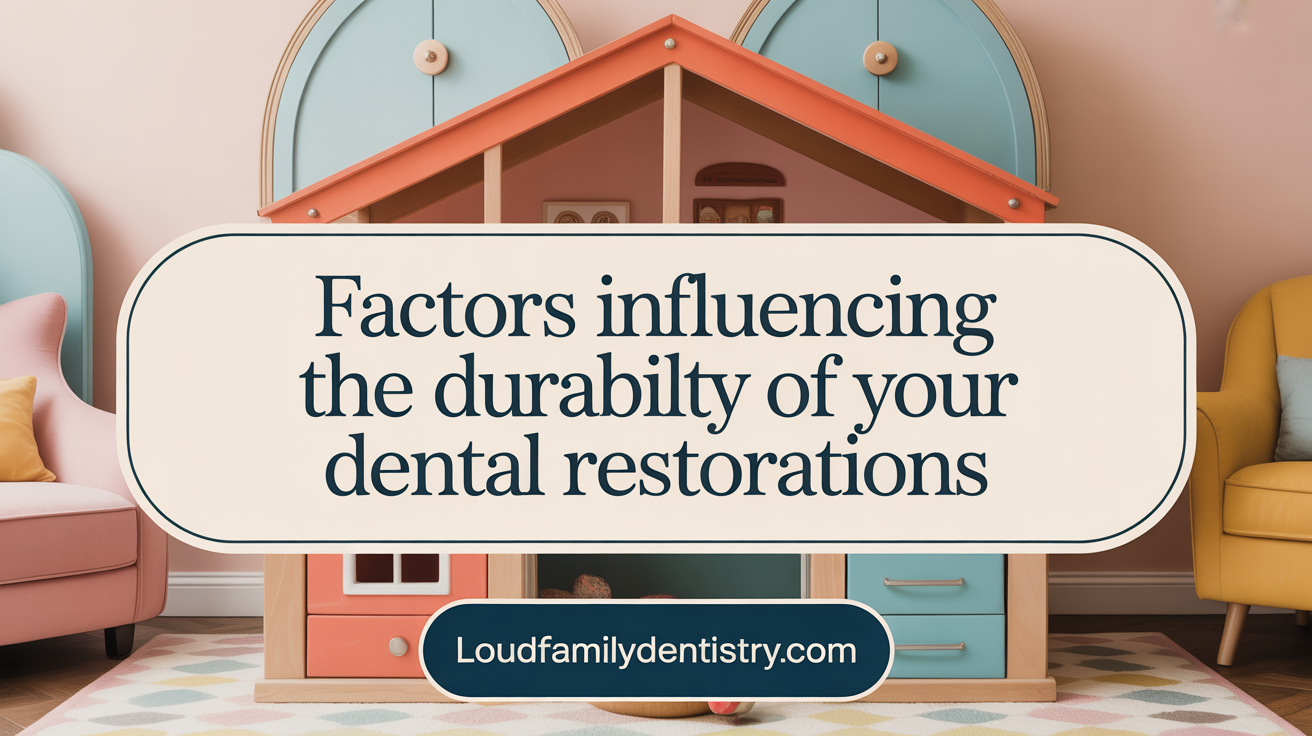Introduction
Dental fillings are a cornerstone of restorative dentistry, aimed at treating cavities and restoring tooth function and aesthetics. As dental technology and materials evolve, understanding the longevity and patient satisfaction associated with different filling types is essential for making informed treatment decisions. This article explores the durability, clinical performance, and patient perceptions of various dental filling materials, supported by up-to-date statistical research and clinical evaluations.
Dental Filling Durability and Patient Satisfaction
- The longevity of dental fillings depends on material type, with amalgam lasting 10-15 years and gold up to 20+ years.
- Composite resins typically last 5-15 years with an 8-year failure rate of about 12%, influenced by placement techniques and patient habits.
- Failure causes include secondary caries, fractures, and marginal failures, often worsened by poor oral hygiene and large cavities.
- Amalgam fillings have an annual failure rate of 0.16%-2.83%; composites around 1-4% annually, affected by technique and cavity size.
- Materials like Glass Ionomer Cement (GIC) last up to 7-10 years with about 7% annual failure rate; ceramic crowns last 10-20 years.
- Patient satisfaction is higher with composites for aesthetics, while amalgam is favored for durability in load-bearing areas.
- Recent meta-analyses show composite and amalgam restorations demonstrate comparable survival rates over long-term follow-up.
- Patient perceptions favor aesthetic qualities of composite, with satisfaction rates over 80%, but clinicians rate restorations more favorably overall.
- Proper communication and patient education on the expected lifespan and maintenance improve satisfaction and clinical success.
- Advances in material formulations and placement techniques continue to enhance the durability and performance of dental restorations.
1. Longevity of Dental Fillings: What Do the Numbers Say?

What factors influence the longevity and durability of dental fillings?
The lifespan of dental restorations depends on multiple intertwined factors. Material type plays a crucial role—amalgam and gold restorations generally last longer than composite resins. For instance, amalgam restorations have an annual failure rate between 0.16% and 2.83%, and gold can last up to 20 years or more with proper care.
The location of the filling within the mouth affects its durability; molars experience more pressure during chewing, which often shortens their lifespan. Tooth-related factors such as cavity size, location, and remaining healthy tooth structure—like the blood supply—also influence success. Restorations on endodontically treated teeth tend to have higher failure rates, particularly around 10.9% annually, compared to vital teeth at about 4.5%.
Operator skill, experience, and adherence to proper placement techniques significantly impact outcomes. Proper moisture control, effective light-curing, and material selection are essential. Patient habits, including oral hygiene practices, diet, and behaviors like teeth grinding, can accelerate failure risks. Regular dental visits help monitor condition and prevent decay.
Signs like cracks, chips, or increased sensitivity indicate that a restoration might need assessment or replacement. Ultimately, comprehensive management and technique optimization are key to prolonging the life of dental fillings.
What does research say about the typical lifespan of different dental restoration materials?
Recent large-scale research and meta-analyses offer insights into the durability of common materials. Amalgam fillings historically last about 10 to 15 years, with some exceeding this range under ideal conditions. However, their failure rates slightly outpace those of newer materials.
Composite resins have gained popularity due to their excellent esthetics and improving durability. Studies show they demonstrate a higher patient satisfaction (mean difference=1.20, p=0.002) and comparable clinical effectiveness with failure rates around 11.98% over an eight-year follow-up. Systematic reviews indicate that after 15 years, composite restorations retain about 75% survival, with annual failure rates near 3%.
Advancements in composite material formulations and placement techniques contribute to these improvements, making them a viable long-term solution. Factors including proper bonding, patient oral health, and appropriate case selection enhance longevity.
What evidence-based insights exist regarding treatment success, failure rates, and factors affecting overall outcomes for dental fillings?
Research consolidates that the success of dental restorations depends on a mix of material quality, operator skills, and patient health factors. Proven data suggest that resin composites tend to have higher short-term survival, but their longevity may decrease over time—around 20% failure after two years.
Failure causes include secondary caries, fractures, marginal failures, and dislodgement. In addition, the presence of large cavities, multiple surfaces restorations, or poor technique during placement increases the risk of failure.
Patient-related factors such as poor oral hygiene, high caries risk, and systemic conditions can accelerate the degradation of restorations. Dentists' experience and adherence to clinical protocols—like moisture control and correct curing—are vital.
Overall, well-performed restorations with good patient management can last over a decade; however, regular follow-up is needed to address early signs of failure and perform necessary replacements.
| Material Type | Typical Lifespan | Failure Rate (Approximate) | Influencing Factors |
|---|---|---|---|
| Amalgam | 10-20 years | 0.16% - 2.83% annually | Technique, cavity size, location |
| Composite Resin | 5-15 years | 1-4% annually | Placement technique, patient care |
| GIC (Glass Ionomer Cement) | Up to 7-10 years | ~7% annually | Moisture control, cavity size |
| Ceramic Crowns | 10-20 years | Variable | Material quality, tooth preparation |
| Porcelain Fused-to-Metal | 10-15 years | Variable | Restorative technique, occlusion |
The ongoing refinement of materials, bonding technologies, and clinical protocols continue to improve the longevity and patient satisfaction with dental restorations, aligning scientific insights with practical outcomes.
2. Patient Satisfaction with Dental Fillings: Insights from Clinical Studies

How do patient satisfaction and perceptions vary between different dental filling materials?
Patient views on dental filling materials differ considerably, influenced by factors like appearance, safety, and how long the filling lasts. Composite resin fillings are often preferred for their ability to blend with natural teeth, offering a discreet look, especially in visible areas. Their bonding nature allows for less invasive procedures, which many patients find appealing.
Conversely, amalgam fillings are highly valued for their durability and strength, making them suitable for load-bearing areas like molars. Although concerns about mercury content persist, current low-certainty evidence indicates no significant safety differences between the materials.
Patients’ perceptions are shaped by their aesthetic preferences and understanding of the materials' safety and expected lifespan. Personalized education from dentists about these factors can help patients make informed choices that meet their expectations.
What clinical evaluations or meta-analyses exist on the performance of dental fillings?
Research in this area includes multiple clinical assessments and meta-analyses focusing on the success and longevity of dental restorations. Many systematic reviews compare different composite materials, such as bulk-fill versus traditional composite resins. These studies show that bulk-fill composites often have advantages like less shrinkage during curing and similar or better mechanical properties.
Long-term clinical trials, lasting from 1 to 10 years, have demonstrated that both traditional and newer composite systems tend to perform well, with comparable survival rates and failure modes. Common failure reasons include secondary caries, fractures, or marginal defects.
These evaluations utilize standardized scoring systems like the USPHS criteria and advanced statistical tools to analyze data across multiple studies, providing a comprehensive view of material performance.
Factors Influencing Satisfaction and Performance
| Material Type | Aesthetic Quality | Durability | Failure Modes | Suitability | Evidence Quality |
|---|---|---|---|---|---|
| Composite resin | High | Moderate to High | Secondary caries, fractures | Visible areas, anterior/posterior | Good |
| Amalgam | Moderate | Very High | Cracking, tarnishing | Posterior teeth, load-bearing | Moderate |
| Bulk-fill composites | High | Similar to traditional | Polymerization stress, fractures | Large cavities, efficient procedures | Improving |
Influence of Material Choice on Satisfaction
Patient contentment with fillings is often linked to the material's aesthetics and functionality. Composite resins score particularly high on appearance, especially in front teeth. Durability, however, remains a concern, especially in areas subjected to intense biting forces.
Clinical studies confirm that newer materials, like bulk-fill composites, offer promising durability with added advantages in placement speed. This may enhance patient satisfaction due to shorter procedures and satisfactory aesthetic outcomes.
Recent Data on Satisfaction Percentages
- Patients report approximately 52.8% satisfaction with anterior resin composite restorations, mainly due to aesthetic factors like color matching.
- Clinicians, however, typically rate the same restorations as satisfactory in about 82.3% of cases.
- Overall, patients show a preference for composite restorations over amalgam regarding color and aesthetic value, with satisfaction rates around 88.1% versus 81.0%.
This disparity highlights the importance of proper communication and setting realistic expectations.
Managing Patient Expectations and Education
Understanding that patients tend to overestimate the longevity of fillings underscores the need for effective patient education. Explaining typical lifespans—5 to 15 years for composites, 10 to 20 for amalgam—can align expectations with realistic outcomes.
Dentists should discuss factors influencing restoration longevity, such as oral hygiene, decay risk, and material choice. Such conversations foster trust and improve overall satisfaction.
In conclusion, patient satisfaction with dental restorations is multifaceted, influenced by material properties, clinical performance, and the dentist-patient dialogue. As research continues to evolve, integrating scientific findings with patient-centered care remains essential.
Wrapping Up: Durability Meets Patient Expectations
Dental fillings, a common intervention in dental care, demonstrate varying degrees of longevity depending on material choice, technique, and individual patient factors. Recent research underscores that composite resins, once considered less durable, can rival traditional amalgam in lifespan provided optimal conditions and skilled application. Patient satisfaction closely aligns with aesthetics and comfort, making composite materials a preferred choice despite their slightly higher failure rates. Clinical evidence and meta-analyses validate the performance of modern composites and evolving techniques such as bulk-fills and digital fabrication, emphasizing the importance of individualized care. Ultimately, successful dental restorations strike a balance between durability, safety, aesthetic appeal, and patient expectations, empowering dental professionals and patients alike to make informed decisions for lasting oral health.
References
- Multifactorial Contributors to the Longevity of Dental Restorations
- Patients´ satisfaction concerning direct anterior dental restoration
- Attitudes regarding a warranty and the expected longevity of dental ...
- Effectiveness of Resin-Composite Fillings vs. Amalgam Fillings in ...
- Longevity of Dental Fillings Utilizing 3D Printing - ClinicalTrials.gov
- Patient Satisfaction Towards Composite and Amalgam... - LWW.com
- Multifactorial Contributors to the Longevity of Dental Restorations
- Longevity of Dental Restorations - Number Analytics
- Patient Satisfaction and Oral Health-Related Quality of... - LWW.com
